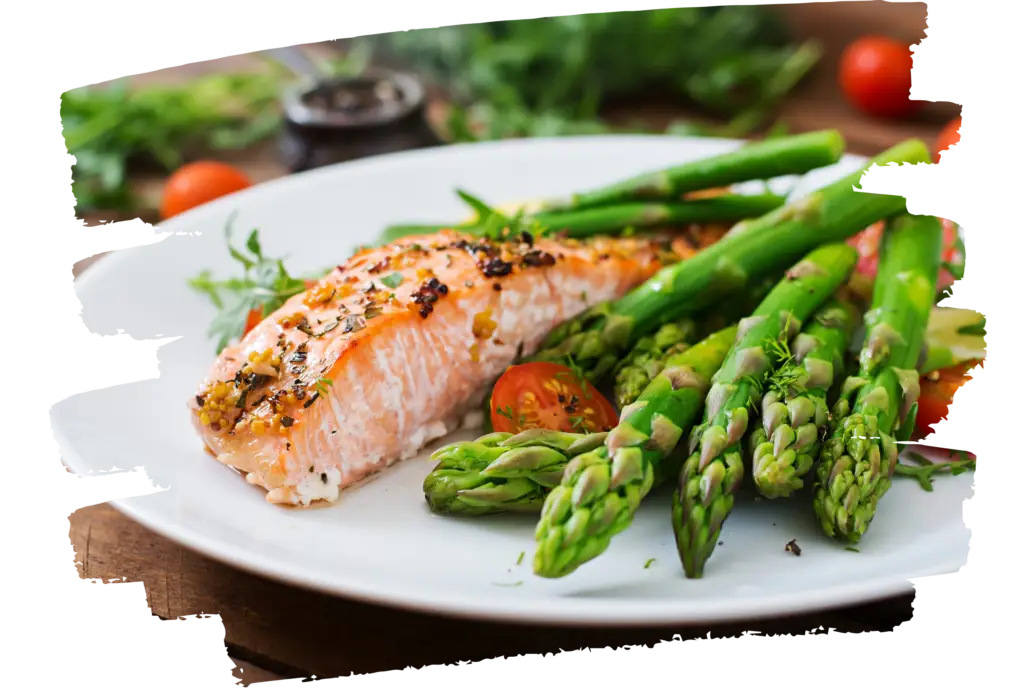
Roasted asparagus is not just a tasty veggie; it’s a nutritionist-approved superfood packed with vitamins, minerals, and antioxidants. This simple yet flavorful dish is perfect for elevating your meals while supporting your health. So, let’s take a closer look at why this green delight deserves a spot on your plate!
Table of Contents
Incorporating Roasted Asparagus into Daily Meals: Versatile Solutions for Every Table
Roasted asparagus is a quick and tasty addition to any meal. With its tender texture and slightly nutty flavor, it can elevate simple dishes to something special. This easy recipe fits perfectly into a busy weeknight routine, making it a go-to for health-conscious eaters.
Adding roasted asparagus to your plate not only enhances your meals but also provides a nutritious boost. Asparagus is rich in vitamins A, C, and K, along with fiber that supports digestive health. Toss it into salads, serve it as a side dish, or mix it into pasta dishes for a vibrant green touch.

Ingredients
- 1 bunch of fresh asparagus
- 2 tablespoons olive oil
- Salt and pepper to taste
- 1 teaspoon garlic powder (optional)
- 1 tablespoon lemon juice (optional)
Instructions
- Preheat your oven to 400°F (200°C).
- Wash the asparagus and trim off the tough ends.
- Place the asparagus on a baking sheet and drizzle with olive oil. Sprinkle salt, pepper, and garlic powder if using. Toss to coat evenly.
- Spread the asparagus out in a single layer and roast for 15-20 minutes until tender and slightly crisp.
- Remove from the oven and drizzle with lemon juice before serving, if desired.
Perfect Pairings: Complementary Flavors That Elevate Roasted Asparagus
Roasted asparagus is a delightful dish that brings out the vegetable’s natural sweetness and crunch. Its earthy flavor pairs well with a variety of foods, making it a versatile addition to any meal. Plus, it’s simple to prepare, requiring just a few ingredients and minimal cooking time.
This green superfood shines when combined with complementary flavors. Think about pairing it with citrusy dressings, creamy cheese, or savory meats like prosciutto. These combinations not only enhance the taste of the asparagus but also add a visually appealing touch to your plate.

Ingredients
- 1 pound fresh asparagus
- 2 tablespoons olive oil
- Salt and pepper to taste
- 1 lemon, zested and juiced
- 1/2 cup grated Parmesan cheese
- Prosciutto or other cured meats (optional)
- Fresh herbs (like thyme or basil) for garnish
Instructions
- Preheat your oven to 400°F (200°C).
- Trim the tough ends off the asparagus and place them on a baking sheet.
- Drizzle olive oil over the asparagus and sprinkle with salt and pepper. Toss to coat evenly.
- Roast in the oven for 12-15 minutes until tender and slightly crispy.
- Remove from the oven, then squeeze lemon juice over the asparagus and sprinkle with lemon zest and Parmesan cheese.
- Serve warm, optionally garnished with prosciutto and fresh herbs.
Pro tip
Seasonal Variations: Elevating Roasted Asparagus Throughout the Year
Spring’s Tender Shoots: The Classic Approach
Spring-harvested asparagus delivers that quintessential tender-crisp texture that roasts to perfection in just 10 minutes. During peak season (March-May), focus on minimal preparation—olive oil, salt, and high heat (425°F) will showcase the natural sweetness that only spring asparagus possesses. The thinner spring stalks benefit from watchful roasting; they’re done when the tips begin to caramelize but before the delicate stems become limp. Try finishing with Meyer lemon zest rather than juice for a distinctly springtime brightness without adding moisture that compromises the perfect crisp exterior.
Summer’s Robust Spears: Heat-Adaptive Techniques
Summer asparagus develops a more robust flavor profile and heartier texture. Combat summer’s thicker stalks by using the “double-heat method”—start with a quick 60-second blanch in heavily salted water before patting completely dry, then roast at a higher temperature (450°F) for 8-10 minutes. This technique ensures even cooking and prevents the woody exterior summer asparagus often develops. For summer harvests, experiment with smoked finishing salts and charred lemon halves squeezed tableside to complement the deeper flavor notes that develop in warmer growing conditions.
Fall and Winter: Working with Off-Season Asparagus
When using off-season imported asparagus during fall and winter, counterbalance the less pronounced natural sweetness with flavor-boosting preparation. Prior to roasting, marinate spears for 30 minutes in 1 tablespoon honey dissolved in 2 tablespoons white balsamic vinegar with a pinch of red pepper flakes. The brief acidic soak tenderizes tougher fibers while the honey promotes deeper caramelization during roasting. Fall and winter asparagus benefits from slightly longer roasting times (14-16 minutes) and pairs exceptionally well with seasonal garnishes like toasted hazelnuts, brown butter breadcrumbs, or shaved aged cheeses that heighten the umami qualities of off-season spears.
The Forgotten Purple and White Varieties
While green asparagus dominates American markets, seek out the less common purple and white varieties for truly distinctive roasting results. Purple asparagus contains higher sugar content and roasts 2-3 minutes faster than green varieties—watch carefully as the anthocyanins that create the purple coloration will fade during cooking but leave behind an unusually sweet flavor profile. White asparagus requires peeling before roasting and benefits from a light dusting of potato starch to achieve the golden exterior texture that green varieties develop naturally. The delicate flavor of white asparagus shines when roasted with browned butter and finished with preserved lemon and tarragon.
If you want to discover more hidden culinary gems around the world, check out this page.

